If you have been working from home and your dog is used to constant company, starting to work outside the house is a huge change. Following these 5 steps on how to reduce separation anxiety in dogs, so you can help your pooch transition smoothly into this new lifestyle.
If you don’t prepare your anxious dog for longer days alone at home, you might experience a variety of un wanted behaviors due to them trying to cope with the stress of your absence.
–>You might also be interested in Is It Okay to Crate My Dog When I’m at Work? The Pros and Cons of a Dog Crate<–
Signs of Separation Anxiety in Dogs
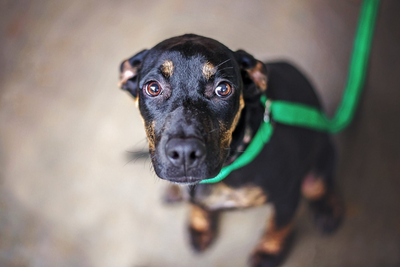
Do you know how to spot the behaviors that express your dog’s anxiety of separation? It is quite clear whether your dog is happy or upset, however identifying when canine behavior is stress based versus general mischievousness can take some practice.
4 stress related behaviors seen in dogs with anxiety:
- Your dog engages in destructive behavior in the house when you are gone.
- He barks, whines or howls even after you have left.
- Your dog paces excessively throughout the house.
- Urinating or defecating indoors.
If you already have an anxious pup, and you are struggling with any of the below behaviors, it is time to help them reduce their separation anxiety:
==>LEARN MORE ABOUT OUR DOG WALKING SERVICES<==
1. Get Your Dog Used to a Routine
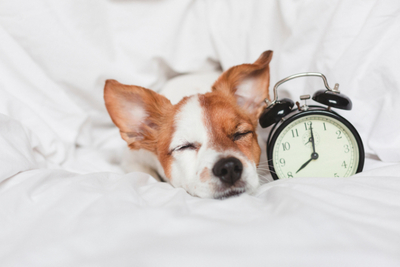
Dogs feel safe with routines because when the day proceeds in the same order, they know what to expect. If the routine involves you leaving the house and then returning later, they will learn that you will always come back because it’s part of the routine.
When helping your dog work through their separation anxiety, it is super important to transition into a predictable routine that involves short period of times where you leave the house.
A sample routine could be: wake up, feed breakfast, go out for walk, some snuggles, get ready to leave the house, dog walker comes midday to take your dog out, you return to feed dinner, your dog is taken out one last time before bedtime, bedtime snuggles.
Consider that a routine does not require exact times, instead the order of events is what’s important. For example, decide if your dog gets fed first or taken out first and stick to that sequence.
2. Practice Leaving the House
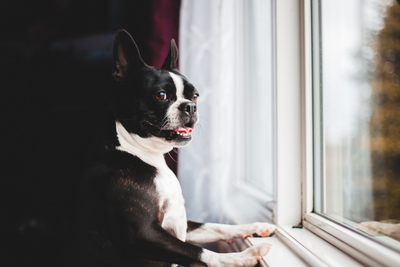
Once you have decided on the sequence of your dog’s daily routine, practice leaving the house. Start with short periods of time (even as little as 15min) and increase the time daily. The stretches of time you leave the house depends on your pup’s personality and what your end goal is.
If you are unsure how Fido is doing when you are out, get a pet cam to check in on his activity when home alone. You might even realize that once gone, your dog stops behaving in a stressed manner and actually settles down for a nap, or to chew one of their favorite toys. It can give you a peace of mind.
You might also be interested in:
- Does My Dog Have A Weight Problem?
- Dog Sitter Rates in 2023: How to Navigate the Cost for your Pooch
- How to Find the Best Dog Walking Company [for you] in Chicago il
3. Don’t let Fido Feed off Your Stress
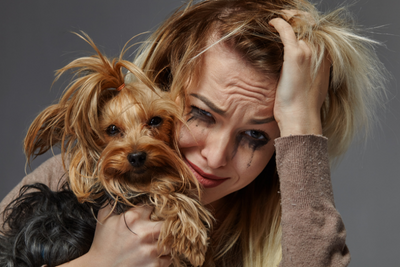
Dog’s get anxious in their own right. Some breeds are predisposed to getting anxious, while others have undergone a traumatic experience such as a loss or being maltreated.
As our dog’s companion and leader of the pack, we also have a role in their anxiety based on the message we send to our pets. If you are anxious and stressed over leaving the house (this might be a big change for you as well), it’s possible to inadvertently signal to your dog that this new routine is scary and dangerous.
If you notice your dog feeding off your stess and anxiety, find ways to take care of your mental health. This can be reaching out to your support system, therapy or seeking medication. Taking care of your mental health will help both you and your dog feel happier.
4. Make Leaving and Returning a Positive Experience
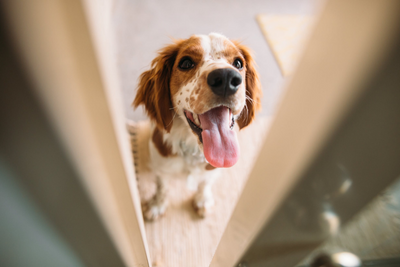
Getting excited upon returning home to your dog is a natural reaction for us and our dogs, however leaving can sometimes take on a different tone. Especially if you live with a nervous nancy.
If your dog has separation anxiety, practice on changing the experience of your departure by leaving the house happy and excited. Think about that happy energetic energy you bring upon returning home and act the same way when you are leaving.
A few tips to leaving the house in a peaceful way is taking a deep breath and leave feeling calm and confident, also make sure you are leaving on time so you don’t need to stress out the door.
Treats can be a helpful tool for food motivated dogs, but overall your body language and tone of voice is the most important part of teaching your dog that leaving is not scary.
5. Hire a Dog Walker
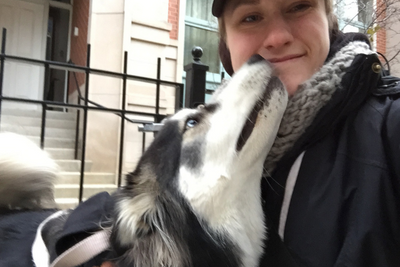
Hiring a regularly scheduled dog walker to come spend time with your dog will make the longer hours at work more bearable. Dog walking has added benefits beyond that of allowing your pup to relieve himself midday. It allows for additional stimulation for your dog, who will look forward to their assigned dog walker to come play with them.
Have your dog walker start a few weeks before going back to work to ensure the relationship is working and that your dog is used to the new routine. That way transitioning out of the house during the day will feel less dramatic of a change when you know the dog walker will be there a few hours later.
If you have questions regarding how a dog walker can help with transitioning back to the office, you can call us at (872) 529-7387 or schedule a free phone consultations here.
Take it Slowly

It’s easy to want our dogs to “go with the flow” and adjust to our life changes on a whim. Just like us humans, dogs have their own personalities and quirks therefore we have to be mindful of the effects of those changes on their wellbeing.
If you have a dog with separation anxiety, it is worth investing time in getting them used to a new schedule. Create a consistent routine, practice leaving the house for periods of time and hire a dog walker who can help you make your dog feel happy and safe when you are at work.


